Nina Notman hears from some of the leading lights in the quest to make chemistry education accessible to all

Science education has many inclusivity and diversity problems. Recent years have seen headway made in tackling some of these, but it is still very much work in progress. And one significant subsection of society remains largely ignored: people with a disability. This cohort makes up 7% of children and 18% of working age adults in the UK.
It isn’t the case that no progress at all has been made to improve access to science for disabled children and young people, explains Katherine Sparkes, chief executive of the UK charity the Lightyear Foundation. A number of people are now doing grassroots-level work, but to increase momentum everyone involved now need to start pulling together, she says.
Not enough is being done yet to break down barriers to including disabled students in science education by ‘any stretch of the imagination’, Sparkes adds. The Lightyear Foundation was established to run sensory science workshops for children and young adults with special educational needs (Sen), but has since branched out. In 2018, for example, it set up a network to share best practice in educating disabled children and young adults in the Stemm (science, technology, engineering, mathematics and medicine) subjects.
We want to showcase science as a viable career option – all too often disabled children are written off
The roundtable, called Sen in Stemm, has representatives from 21 major UK science associations including the Royal Society, British Science Association and Sense About Science. ‘It’s really motivating to see that the wheels of momentum are starting to turn,’ says Sparkes.
School outreach
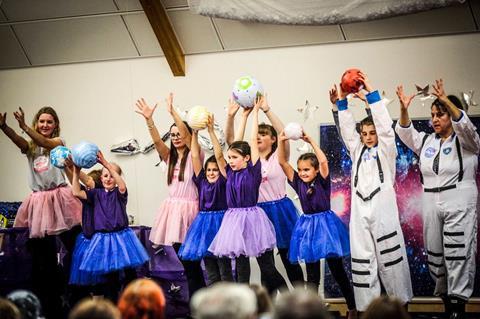
The Lightyear Foundation runs its hour-long workshops in primary schools that exclusively cater for children with Sen. The children are taken on a journey linked to a topical scientific area, such as space travel, by a scientist and a drama professional. ‘We use lots of creative, visual, sensory equipment to help bring it to life, such as sound buttons, flash cards and tactile, squeezy objects or a variety of different smells,’ explains Sparkes. ‘We provide a rich, fun sensory experience for the children with more profound disabilities, while also challenging and inspiring the more cognitively able.’
Raising aspirations – of the children and the adults that care for them – is vitally important to Sparkes. ‘We want to showcase science as a viable career option. All too often disabled children are written off, and it is assumed that science isn’t a place for them,’ she says.
Jane Essex, a lecturer in chemical education at the University of Strathclyde, UK, agrees. ‘Science feels, to many people, like a very elitist, exclusionary practice, and teachers and families are pre-selecting their child [with Sen] out of being interested in doing science,’ she explains. Essex has run a practical chemistry competition, called Salters’ Institute Festival of Chemistry, for year seven and eight students with Sen for over a decade. She also researches inclusion in science and is a vocal advocate for inclusive education.
The Lightyear Foundation has also started profiling practising disabled scientists and coordinating work experience programmes. ‘Last year, for example, we took 20 young people [with Sen] to Aerospace Bristol,’ says Sparkes. ‘They got to see Concorde and meet engineers to ask questions. The students then gave feedback on how the centre could be even more accessible to disabled visitors.’
All senses engaged
US chemist Hoby Wedler also believes it is vital that children and young adults are shown that a disability ‘doesn’t need to hold them back’. During his computational organic chemistry PhD, Wedler ran organic chemistry camps for school students who were visually impaired or blind like him . ‘We used hands-on organic chemistry as a lens to show students that they can do whatever they want,’ he explains.
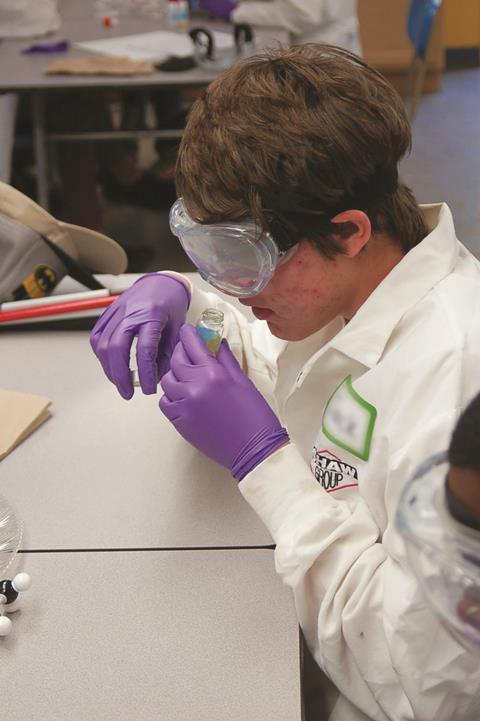
The participants, aged 12 to 18, were paired with blind science mentors. Growing up, Wedler ‘had opportunities to go work with other people who are blind or visually impaired who happened to be scientists’ and he wanted other blind students to have the chance to be inspired too, he says.
The camp participants ran two experiments, both using the sense of smell: a titration to re-protonate the smelly thiols in onions and garlics and a synthesis of a floral ester such as the banana aroma compound, isopentyl acetate. The students used accessible tools such as disposable pipettes in which liquid levels can be felt and talking pH meters.
Smell is an underused sense, Wedler says. In 2017, after finishing his PhD at the University of California, Davis, he set up the consultancy Senspoint together with a childhood friend. They offer scent marketing strategies, advising companies on how smells could boost sales. The use of freshly baked pie aroma to sell kitchen appliances is a classic example. Senspoint also provides diversity and inclusion coaching.
Blind or visually impaired chemists
In a traditional chemistry lab, of course, sniffing a reaction flask could be a potential hazard. How does a blind or visually impaired chemist stay safe in an undergraduate teaching lab? Just fine with the right support, explains Wedler. ‘All the way through undergraduate school, I took all the same lab courses that my colleagues took,’ he says. A lab partner was always on hand to help, he explains.

There are assistive technologies for blind and visually impaired chemists, but most would argue that more are needed and that not enough blind and visually impaired students have access to the ones that are commercially available.
The University of Birmingham’s chemistry department has hosted a couple of ‘very hands on’ blind or visually impaired students, and consequently have invested in devices such as a talking burette reader that is slid up and down to find the meniscus point, a braille label maker, to mark volumes on glassware, and magnifying tools. ‘You want students to do as much as they can possibly, while keeping your safety hat on that they’re not doing something that’s going to be potentially dangerous,’ explains Ian Shannon, director of undergraduate laboratories in this UK department.
I can feel Braille reaction schemes and walk myself through mechanisms
Perhaps surprisingly, it is not the practicals but the associated paper- and computer-work that blind and visually impaired chemistry students can find the most challenging. Birmingham uses software able to speak an electronic lab manual. It also used an embossed printer to translate IR and NMR spectra into braille. Wedler also had reaction schemes converted into braille. ‘I can feel them and walk myself through organic chemistry mechanisms,’ he says.
We tend to think of organic chemistry as a highly visual discipline with lectures full of chemical structures and curry arrows, but Wedler views being blind as an advantage in these classes. ‘When I travel around as a blind person, I am visualising everything: where the streets are, where buildings are. The exact same skills are needed to think about organic chemistry spatially. I think being able to think about molecules that way is an advantage that my sighted peers don’t have,’ he explains.
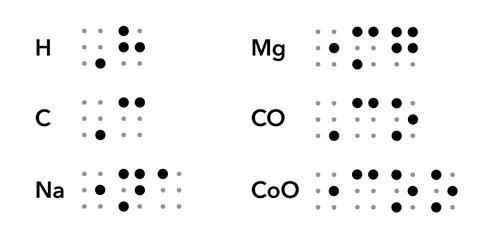
During Wedler’s PhD, he decided that braille chemical structures were no longer enough – he wanted the full 3D experience that his peers had. ‘We decided to implement 3D printing,’ Wedler says. Bespoke software was commissioned that ‘took my optimised structure from the Gaussian software and created 3D printer input files, complete with bonds that have been annotated in braille with bond length’, he says.
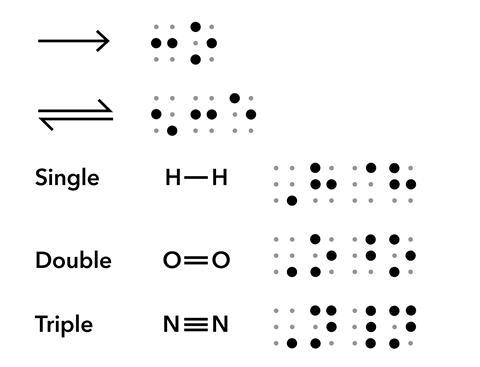
Simple 3D printed molecules are also becoming available for use in undergraduate teaching, says Michael Seery, director of teaching at the University of Edinburgh’s school of chemistry in the UK. ‘The ChemTube3D website has downloadable 3D printing files for molecular models of intermediate states and reaction mechanisms to give a sense of, for example, the SN2 reaction,’ he explains.
‘3D printing is going to revolutionise the ability of blind students to study computational chemistry, and other fields that use a graphical user interface, over the next 15–20 years,’ says Wedler. ‘But, to be totally honest, it’s too expensive and time consuming right now.’
Haptic devices could also make visual scientific data more accessible in the future. This technology uses touch to portray information; vibrating mobile phones and gaming controllers, for example. In 2017, Brad Duerstock and his bioengineering colleagues at Purdue University in the US published a prototype that translates blood smears on microscope slides into vibrations and sounds. The user gets the information via a tool that resembles a joystick. ‘You can essentially hear and feel pictures,’ explains Duerstock.
The academic literature also needs work to make it accessible to chemists who are blind or visually impaired. The main issue is that screen readers cannot process images. ‘There is no good technology yet for someone who is completely blind to independently read an organic chemistry article out of the literature,’ says Wedler. ‘It’s hard to get the full picture of the research when you can’t see the figures.’ The reverse is also true: ‘It is difficult to get the chemistry that I do from my mind, where it’s housed, back to a visual medium, where we can present the data as a publication without assistance from sighted readers.’
Chemical communications
Communication is also the largest consideration when making chemistry accessible to students who are deaf or hard of hearing, says Todd Pagano, professor of chemistry at the Rochester Institute of Technology’s National Technical Institute for the Deaf (NTID) in the US. NTID has been training chemists who are deaf or hard of hearing in the Laboratory Science Technology programme for nearly 20 years.
Safety concerns for deaf or hard of hearing students in the lab are inexpensive and easy to address, such as using strobe attachments on fire alarms, Pagano explains. ‘Eye-level clutter should also be kept at a minimum so that students can see around them in all directions,’ he adds. The possibility that personal protective equipment hinders communication should also be considered. ‘Sometimes safety glasses get in the way of a hearing aid or a cochlear implant,’ Pagano says, and some sign language signs involve touching the face which can be a lab hazard.
What student couldn’t benefit from their instructor just slowing down?
Incidental learning is another consideration. ‘Word of mouth relaying of information is not a good thing in the deaf or hard of hearing classroom,’ says Pagano. ‘Instructors don’t always realise how much teaching and learning goes on in the side conversations that they’re having with students.’
NTID chemistry lecturers use sign language. Students who use sign language at other institutions will instead have interpreters or captionists to support them. The language of chemistry, and other technical subjects, can pose specific problems for sign language users, explains Pagano. ‘Many of the signs in chemistry are not standardised.’
Finger spelling the same scientific term repeatedly during a lecture is very time consuming. Instead, signing lecturers tend to establish their own signs for scientific terms. These often contain contextual information. ‘You can set up the structure of an atom and explain electrons jumping from orbitals almost better in sign language than you can in English,’ says Pagano.
Voice-to-text software advances may eventually make lectures, in all subjects, more accessible to deaf or hard of hearing students. Until then, students who use sign language may also benefit from note-takers in the lecture hall (it’s hard to take notes and watch signs simultaneously).
But most of the adaptations Pagano recommends for deaf or hard of hearing students ‘makes for a better teaching and learning environment for everybody’. Examples include not talking to the board, so students don’t miss visual cues about what’s being taught, providing material ahead of time and keeping laser pointers fixed on points of interest for a bit longer. ‘What student couldn’t benefit from their instructor just slowing down?’ asks Pagano.
Most importantly, Pagano says, deaf or hard of hearing students should be treated equally to their hearing peers. ‘Give them the support they need, but then consider them just like any other student in the class.’
Scientists on wheels
High fume hoods and workbenches tend to make traditional science labs inaccessible to wheelchair users. They are also often tightly packed with expensive, fragile equipment. ‘I’m like a bull in a china shop,’ jokes Duerstock, a quadriplegic who uses a motorised wheelchair.
Height-adjustable fume hoods and workbenches are becoming more commonplace, but aren’t suitable for all wheelchair users. Duerstock says that robotics is also starting to reduce wheelchair-using scientists’ reliance on human assistants. This is part of a wider trend – robotics is expected to revolutionise the life of people with physical disabilities in all aspects of their lives in the future. Duerstock, for his part, has tested robotic manipulators and devices able to position and retrieve typical scientific objects such as samples and microscope slides.
Equipment of this type is very expensive and robotics use is not without its issues for some would-be-users. ‘For people with [upper limb] mobility impairments, human–computer interaction can be a big challenge,’ says Duerstock. Using a joystick to control a robotic arm with six degrees of freedom requires a lot of hand dexterity, he explains.
Robotics could reduce wheelchair-using scientists’ reliance on human assistants
Wrist gesture recognition offers a potential alternative. Duerstock has programmed inertial measurement unit sensors, common in smartphones, to remotely operate robots and computer screens. He also uses computer vision sensors, like Microsoft’s Kinect, for the same purpose. For both approaches, machine learning plays a vital role. ‘Machine learning algorithms can do a very good job of classifying gestures – as long as you’re somewhat consistent with how you do a movement it will be recognised,’ Duerstock explains.
Much of the assistive technology that Duerstock and others are developing for scientists with physical disabilities, he predicts will eventually be ‘useful to everyone’ – offering hands-off approaches to routine laboratory activities.
Specific learning difficulties
For most chemistry educators, the disabilities they will most frequently encounter are specific learning difficulties such as dyslexia and dyspraxia. One in 10 people are thought to have dyslexia, for example, and one in 20 students in UK higher education have disclosed a specific learning difficulty to their institution.
In the first year of GCSE chemistry you will learn more new words than you do in the first year of a French GCSE
Joe Reddington, a disability awareness consultant from Luton, UK, says that science poses specific, sometimes unnoticed, challenges for students with learning difficulties. ‘In the first year of GCSE chemistry you will learn more new words than you do in the first year of a French GCSE,’ he explains.
Edinburgh’s Seery is currently heading an RSC-funded project called Chemclusion, looking at best practice for supporting undergraduate chemistry students with various types of disabilities, including learning difficulties. The first, ongoing, step is to talk to current (and past chemistry) students that self-identify as disabled about what approaches they have found helpful.
Answers so far have fallen into two broad areas: assistive technologies such as those discussed above, and giving students multiple ways of accessing lecture content. ‘Most universities’ protocol disability adjustments require academic staff to post notes online in advance of lectures. This is crucial for people who have reading difficulties or people who take longer to process information,’ says Seery.
Other popular – but, so far, less utilised – responses that Seery has received include posting recordings of lectures or captioned videos online, providing well-structured reading lists, prompting students to use mind maps to see how different concepts fit together, and adding image descriptions to PowerPoint files.
These are all examples of best practice that have been shown to help all students, not just disabled learners. ‘These are not extra chores lecturers have to do for just one person in their class; giving students multiple means of representation is very beneficial to everybody,’ says Seery. In addition, most adaptations are not big undertakings. ‘Part of my goal with this project is to alert lecturers to the obvious things that they are able to do without much extra work,’ he adds.
Regardless of the amount of effort or expense involved, it is high time that chemical education was finally opened up to all children and young adults regardless of whatever disability they may have. Progress, such as that described above, has been made in recent years. But large numbers of disabled students are still being excluded from experiencing the joy of science (and subsequently from potential careers) simply because the current system is not set up to educate them. As scientists we are problem-solvers by definition, and it’s high time we all pulled together and figured out how to fix this.
Nina Notman is a science writer based in Salisbury, UK
With special thanks to Rob Butler, former chemistry teacher at a special school turned education consultant, whose input helped shape this article
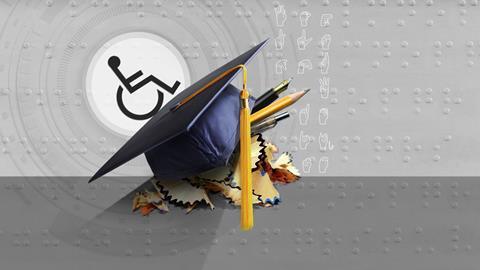
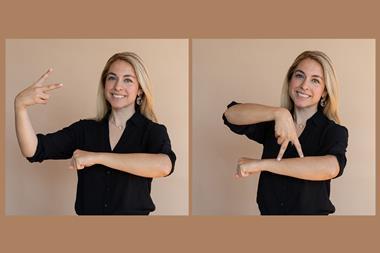

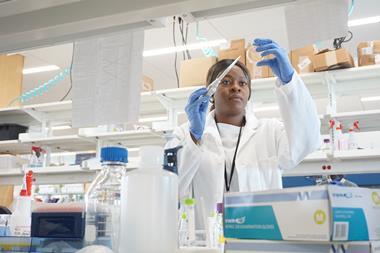
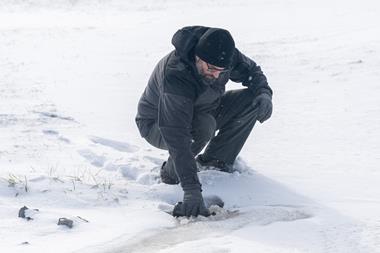








No comments yet